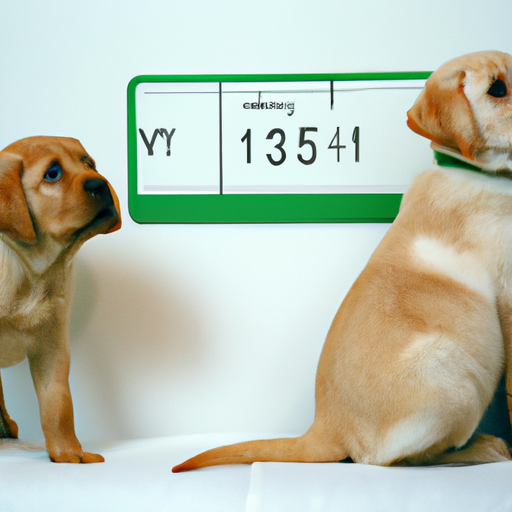Introduction
You’ve probably asked yourself, “When do labs stop growing?” As a caregiver to a Labrador Retriever, this question is often at the forefront of your mind. You want to know when your puppy will reach its full size, so you can prepare adequately, from its diet to its living space. Let’s dig deep into everything you need to know about the growth stages of your Labrador Retriever.
Understanding Labrador Growth Stages
Understanding these stages will help you to provide the right care at the right time.
- Neonatal Stage (0-2 weeks): Your Labrador is born blind and deaf during this stage. Growth is primarily physical.
- Transitional Stage (2-4 weeks): Eyes and ears gradually open. Puppies start to stand and explore their surroundings.
- Socialization Stage (4-12 weeks): This is where they learn to interact with other dogs and humans. Physical growth is quick during this period.
- Juvenile Stage (3-6 months): Puppies start to lose their baby teeth, and adult teeth begin to grow. By the end of this stage, most Labs have reached half of their adult weight.
- Adolescent Stage (6-18 months): A period of rapid growth and development. Your Lab will reach close to its adult height.
- Adulthood (18 months onwards): Labs typically reach their full size during this stage, and their growth rate slows significantly.
When Do Labs Reach Full Size?
Labrador Retrievers are considered fully grown between 18 months and 2 years of age. However, remember that every dog is an individual, and growth can vary.
| Stage | Age | Weight |
|---|---|---|
| Puppy | 0-6 months | 5-50 lbs |
| Adolescent | 6-18 months | 50-70 lbs |
| Adult | 18 months onwards | 70-80 lbs |
Factors Affecting Lab Growth
Several factors can influence when your Labrador stops growing:
- Genetics: The size of a Lab’s parents mostly determines how big a Lab will get.
- Diet: Overfeeding can lead to rapid, unhealthy growth.
- Exercise: Regular physical activity contributes to healthy growth.
- Gender: Male Labs usually grow bigger and faster than their female counterparts.
How to Measure Lab Growth
You might be curious about how to measure your Lab’s growth. You can use a scale for weight, and a tape for height (measured from the shoulder). Keep a record to track your Lab’s growth over time.
Possible Health Concerns
Labs are prone to certain health issues, such as hip and elbow dysplasia, obesity, and heart conditions. These could affect their growth and overall health. Regular veterinary check-ups can help detect and manage these issues early.
Tips for Healthy Lab Growth
Here are some tips to ensure healthy growth:
- Feed your Lab a balanced diet appropriate for its age, size, and health status.
- Exercise your Lab regularly, but avoid strenuous activity in puppies.
- Regular vet check-ups are crucial.
FAQs
1. When do Labradors reach their full height?
Labs typically reach their full height by 1 year of age, but can continue to fill out and gain muscle until about 18 months to 2 years.
2. What if my Lab is not growing as expected?
If your Lab is not growing as per the expected growth chart, it could be due to several reasons such as poor nutrition, lack of exercise, or health issues. Consult with your vet if you have any concerns.
3. How big will my Lab get?
Male Labs typically weigh between 65 to 80 lbs and stand about 22.5 to 24.5 inches tall. Female Labs usually weigh between 55 to 70 lbs and stand about 21.5 to 23.5 inches tall.
4. Are Labs prone to obesity?
Yes, Labs are prone to obesity, largely due to their love for food. Maintain a balanced diet and regular exercise to keep their weight in check.
Understanding the growth stages of your Labrador Retriever and providing the right care can ensure a happy, healthy life for your furry friend. Remember, every Lab is unique, and growth can vary. Enjoy each stage of their growth, as they all come with their own joy and challenges.



